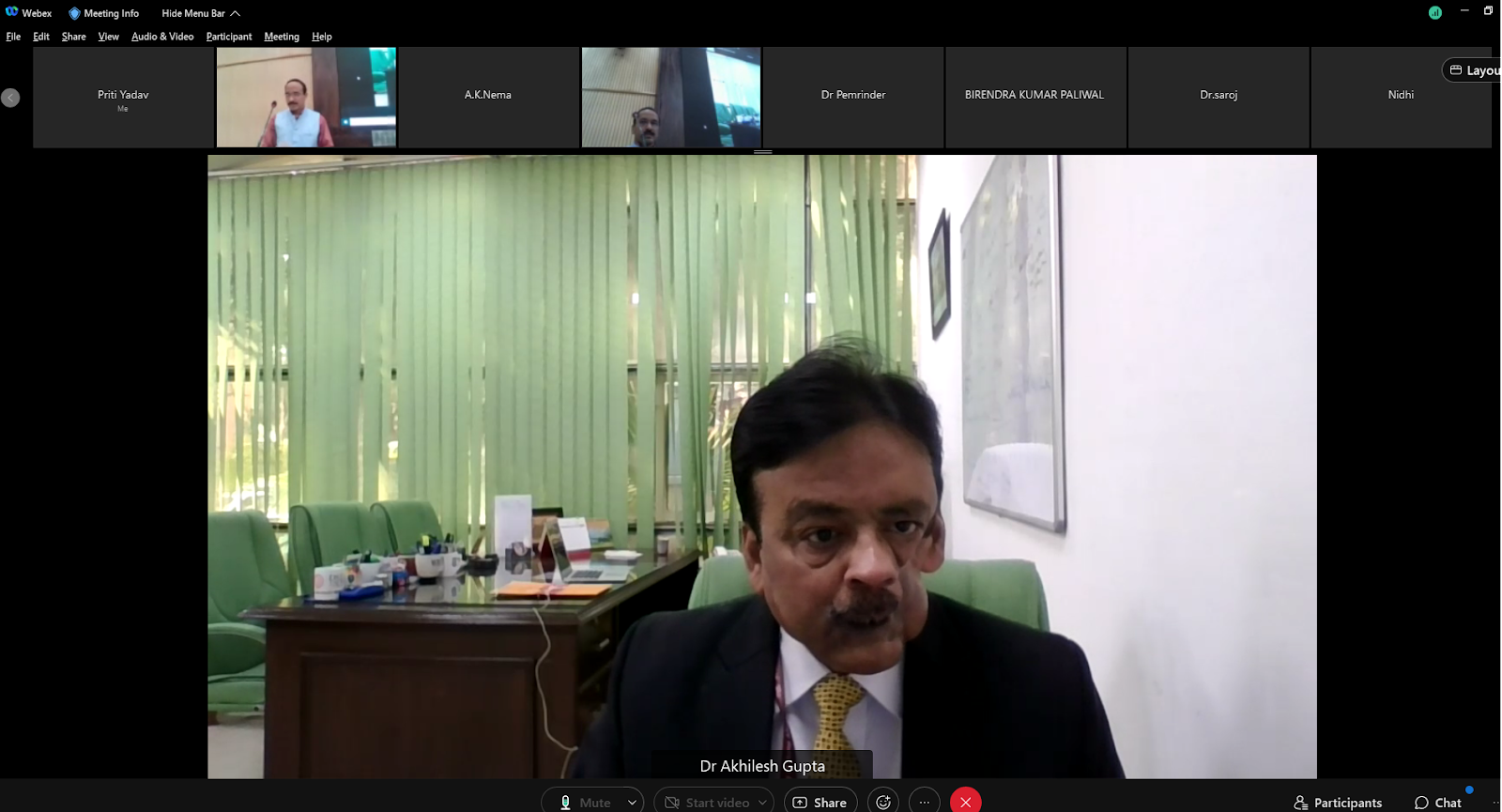Role of states in developing priorities & strategies to strengthen the STI ecosystem emphasized at Madhya Pradesh Vigyan Sammelan
The major role of states and union territories in developing priorities, focus, and strategies to strengthen the national science, technology & innovations (STI) ecosystem was highlighted at the Madhya Pradesh Vigyan Sammelan & Expo 2021 being held during December 22-25.
“There is dire need for states to be proactive in aligning their policies towards the larger goal of strengthening center-state coordination and collaboration mechanism in STI,” Dr. Akhilesh Gupta, Senior Adviser & Head, Department of Science & Technology, Govt. of India, said while stressing on the need for Strengthening centre-state STI Coordination at IIT Indore.
Dr. Gupta, in his online talk, highlighted steps taken in recent years by Indian government in science technology & innovation (STI) field for realizing Atmanirbhar Bharat.
Presenting an overall picture of India’s development in S&T areas in recent years, he said that India has made remarkable progress in STI with India’s Gross Expenditure on R&D (GERD) increasing by 3 times in 10 years, India ranks 3rd in terms of publication of SCI journals and has an impressive 2nd largest number of STEM graduates, ranks 4th in number of unicorns and 3rd in number of startups globally.
“Inspite of the good progress in key areas, there is much scope for improvement. India ranks 9th globally in terms of quality of research publications and 9th in patent filing. Women’s participation in research is only 18.7%. India has climbed to 46th position in Global Innovation Index ranking. We need to improve these further to come in top 10 in next 5 years.”
He spoke about the 4 new STI related policies formulated in 2020-21-- Policy on Scientific Social Responsibility (SSR), Policy on Scientific Research Infrastructure Sharing Maintenance and Networks (SRIMAN) for facilitating creation, use, access, sharing, maintenance, and disposal of R&D infrastructure, Liberalized Geospatial Guidelines and Policy for acquiring and producing Geospatial Data and Geospatial Data Services and mapping and the 5th Science, Technology, and Innovation Policy (STIP) creating India's vision for STI led economic growth.
“There has been an unprecedented progress in STI since the last policy formulation in 2013, rapid recent transformation in terms of relevance, scope and scale and rise of disruptive and impactful technologies and there is a need for bringing strong STI connects among Government, Academia and Industry for realizing the ‘Atmanirbhar Bharat’. We also need a focus on indigenous technologies and encourage grassroots level innovation,” Dr. Gupta added, explaining the need for a new Science Technology and Innovation policy.
“The 5th STIP has been perhaps one of the largest, widest, quickest, and most intense exercises ever for any national policy formation in the country. STIP-2020 may be the first-ever policy which has directly involved states and Indian diaspora in the pre-draft consultation process. There has been well-distributed participation in terms of region, age, gender, education, economic status, etc., in the exercise. Gender balance was maintained all through the formulation process, including in the Editorial/drafting exercise with 40% of members were women,” he pointed out.
Dr. Gupta informed that India’s STI concerns include open access policy, reinforcing the National Data Sharing Policy, doubling or tripling Full-time Equivalent Researchers during next 5-8 years, focus on encouraging young scientists and research students, promoting technology indigenization and grass-root innovation, and taking them to market level, addressing key concerns of equity and inclusion. The challenges also include mainstreaming science communication, building synergy and alignment of STIP-2020 with NEP-2020, strengthening state-level R&D and innovation system, and building centre-state partnerships and collaboration.

Comments
Post a Comment